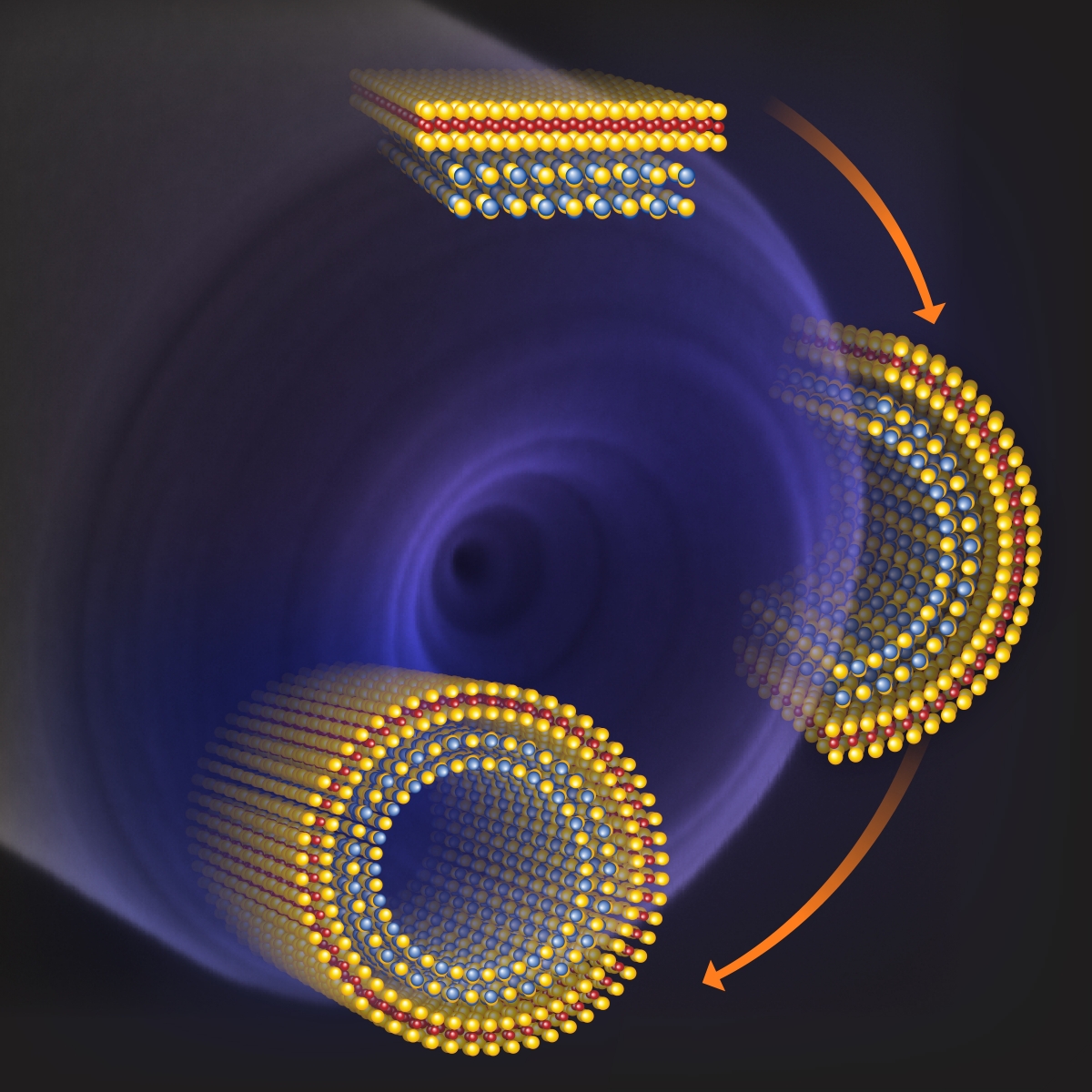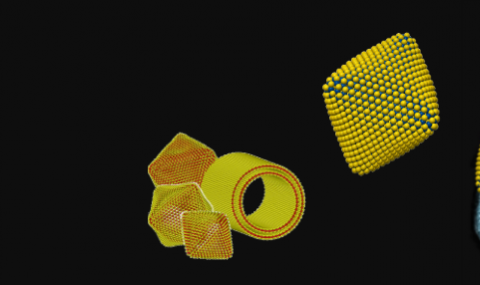Nanotubes from misfit compounds: Ternary (quaternary) “misfit” layered compounds (MLC) is an important class of materials which have been studied for the last 50 years. They are made of alternating stacking of molecular slabs along the c-axis with different chemical composition and periodicities. Among this family of compounds, the series (MX)1+yTX2 - for short MX-TX2 (or even shorter O-T), with M=Sn,Pb,Bi,Sb, rare earths; T=Sn,Ti,V,Cr,Nb,Ta; X= S,Se, have been investigated in some detail. Generally, MLC form incommensurate or semi-incommensurate lattice, at least along one direction (a-axis), whilst the b-axis is common for the MX and TX2 slabs. The MX lattice is a distorted orthorhombic (triclinic) bi-layer structure (O). The TX2 slab crystallizes in a trigonal-prismatic or octahedral (pseudo-hexagonal) lattice (T). Combining two independent stimuli (see Fig. 20), i.e. the lattice mismatch between the MS and TS2 layers (Pauling mechanism- see PNAS 16, 578 (1930)) and eliminating the dangling bonds on the periphery of the nanoparticles (Kroto-Tenne mechanism- see Nature 329, 529 (1987) and No. 91), seamless MLC nanotubes were recently obtained from numerous compounds (see for example No. 263, 292, 305, 307 and 337). The interlayer stacking relationship between the O and T periodic layers was elucidated mostly through electron diffraction as well as other electronmicroscopy techniques. Given the optical, electrical and magnetic properties of the parent compounds, the 1D nanotubular structures could present a rich field of research in the years to come.

Fig. 20. Schematic rendering of the three-step growth of nanotubes from misfit compounds. In the background- SEM micrograph of SbS-TaS2 nanotube. See reference No. 305.
 Fig. 21 shows SEM image of LaS-TaS2 tubes (a) and high resolution STEM-HAADF image of a LaS-TaS2 tube (inset is an EDS chemical mapping of the tube); c. Higher-resolution STEM-bright field image of this tube with the calculated lattice overlaid on the image (Courtesy of Profs. R.E. Dunin Borkowski and Dr. L. Houben, Ernst Ruska Center, Jülich and Prof. G. Seifert, TU Dresden- No. 318).
Fig. 21 shows SEM image of LaS-TaS2 tubes (a) and high resolution STEM-HAADF image of a LaS-TaS2 tube (inset is an EDS chemical mapping of the tube); c. Higher-resolution STEM-bright field image of this tube with the calculated lattice overlaid on the image (Courtesy of Profs. R.E. Dunin Borkowski and Dr. L. Houben, Ernst Ruska Center, Jülich and Prof. G. Seifert, TU Dresden- No. 318).


